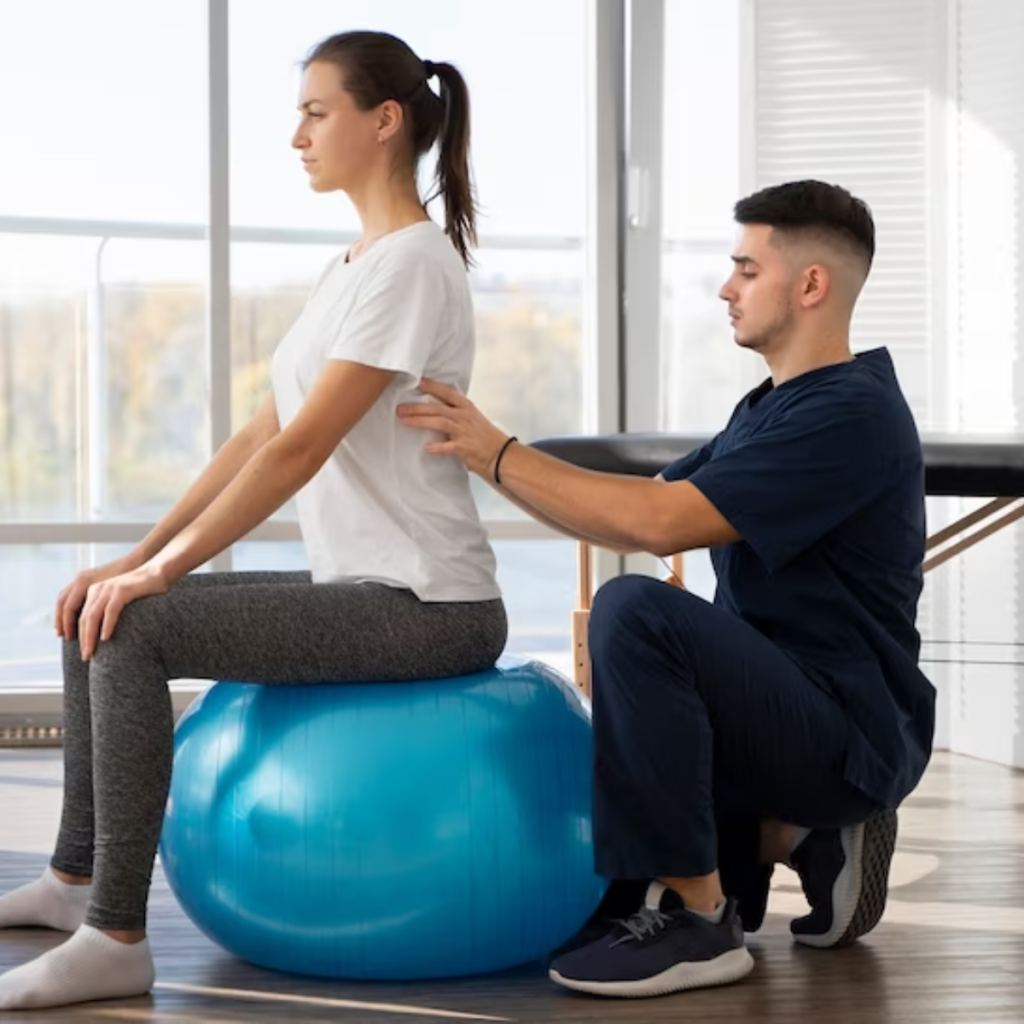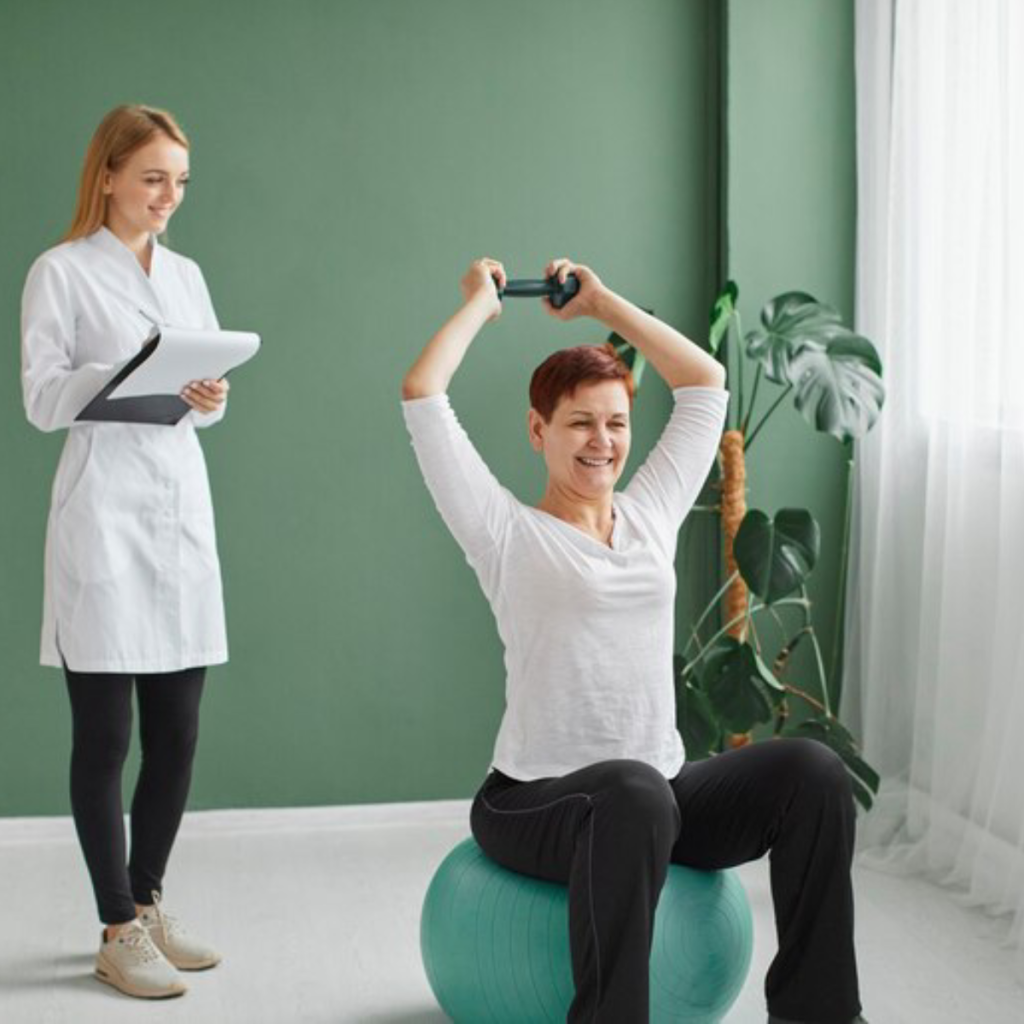Discover how physical therapy can be an effective solution for managing postpartum back pain.
Can Physical Therapy Help Manage Postpartum Back Pain?
Are you a new mom experiencing postpartum back pain? Don’t worry, you’re not alone! Many women experience discomfort in their backs after giving birth. The good news is that physical therapy can be a game-changer in managing postpartum back pain. Let’s dive into the topic and explore how physical therapy can help you find relief and get back to enjoying the wonderful journey of motherhood.

Understanding Postpartum Back Pain
Before we delve into the benefits of physical therapy, let’s take a moment to understand what causes postpartum back pain. During pregnancy, your body undergoes significant changes, including hormonal shifts and the stretching of ligaments and muscles to accommodate your growing baby. These changes can put stress on your back, leading to discomfort and pain.
But what exactly causes this postpartum back pain? Let’s explore some of the common causes in more detail.
Causes of Postpartum Back Pain
Postpartum back pain can have various causes. One of the primary factors is the weakened abdominal muscles. During pregnancy, the abdominal muscles stretch to make room for the growing baby. However, after giving birth, these muscles may not regain their strength and tone as quickly as desired. As a result, they can no longer provide adequate support to your spine, leading to back pain.
In addition to weakened abdominal muscles, the strain of labor and delivery can also contribute to postpartum back pain. The intense physical exertion during childbirth can cause muscle imbalances, as certain muscles may become overworked while others remain underused. These imbalances can put additional stress on the back, leading to discomfort and pain.
Furthermore, the extra weight you gained during pregnancy can also take a toll on your back. Carrying around the additional weight can strain your back muscles and put pressure on your spine. This added stress can contribute to postpartum back pain.
Another factor to consider is the hormonal changes that occur during pregnancy. The hormones responsible for ligament laxity, which allow your body to accommodate the growing baby, can continue affecting your joints postpartum. This ongoing laxity can potentially contribute to back pain as the joints may become less stable and more prone to strain.
Symptoms and Diagnosis of Postpartum Back Pain
Identifying the symptoms of postpartum back pain is crucial for seeking appropriate treatment. Some common symptoms include aching, stiffness, and sharp or shooting pain in the lower back. These symptoms can make daily activities challenging and impact your overall well-being.
If you experience any of these symptoms, it’s always recommended to consult with a healthcare professional who can diagnose the source of your back pain. They will conduct a thorough examination and may order additional tests, such as X-rays or MRI scans, to rule out any underlying conditions.
Based on their findings, your healthcare professional might refer you to a physical therapist. Physical therapy can be an effective treatment option for postpartum back pain. A skilled physical therapist will assess your condition and develop a personalized treatment plan to address your discomfort. This plan may include exercises to strengthen your abdominal and back muscles, manual therapy techniques to alleviate pain, and education on proper body mechanics to prevent further strain on your back.
In conclusion, postpartum back pain is a common issue that many women experience after giving birth. Understanding the causes and symptoms of this pain is crucial for seeking appropriate treatment. Physical therapy can play a significant role in relieving postpartum back pain and helping you regain your strength and mobility. So, if you’re experiencing discomfort in your back after childbirth, don’t hesitate to consult with a healthcare professional and consider the benefits of physical therapy.
The Role of Physical Therapy in Pain Management
Physical therapy is a non-invasive and drug-free approach to managing postpartum back pain. It focuses on restoring and enhancing your body’s functionality while relieving pain. Let’s explore some of the principles and techniques used in physical therapy for back pain.
Principles of Physical Therapy
Physical therapy aims to address the root causes of your pain by improving mobility, strength, and flexibility. Your therapist will design a personalized treatment plan that focuses on your specific needs, considering factors such as your fitness level, lifestyle, and the demands of being a new mother.
The treatment plan may include a combination of exercises, stretches, manual therapy techniques, and education on proper body mechanics. The goal is to empower you with the knowledge and tools needed to manage your pain independently.
During your physical therapy sessions, you will work closely with your therapist to perform targeted exercises that strengthen your core and back muscles. These exercises may include pelvic tilts, bridges, and gentle stretches to improve flexibility. By gradually increasing the intensity and duration of these exercises, you will build strength and stability in your back, reducing pain and improving overall function.
In addition to exercises, your therapist may also use manual therapy techniques to mobilize restricted joints and soft tissues. These techniques can include joint mobilizations, soft tissue mobilizations, and myofascial release. By applying gentle pressure and specific movements, your therapist can help restore proper alignment and relieve tension in your back, further reducing pain and improving mobility.
Furthermore, your physical therapist will provide education on proper body mechanics to prevent further strain or injury. They will teach you how to maintain good posture while sitting, standing, and lifting objects, as well as how to engage your core muscles to support your spine. By implementing these techniques in your daily activities, you can minimize the risk of exacerbating your back pain and promote long-term healing.
Techniques Used in Physical Therapy for Back Pain
Physical therapists use a variety of techniques to help alleviate your postpartum back pain. These may include therapeutic exercises to strengthen your core and back muscles, manual therapy techniques to mobilize restricted joints and soft tissues, and modalities like heat or cold therapy to reduce inflammation and provide pain relief.
Therapeutic exercises are an essential component of physical therapy for back pain. Your therapist will guide you through a series of exercises that target the specific muscles and areas of your back that need strengthening. These exercises can include a combination of stretching, strengthening, and stabilization exercises to improve your overall back function and reduce pain.
Manual therapy techniques, such as joint mobilizations and soft tissue mobilizations, are used to address any restrictions or imbalances in your back. Your therapist will use their hands to apply gentle pressure and specific movements to restore proper joint function and relieve tension in the soft tissues. This hands-on approach can provide immediate pain relief and improve your range of motion.
Modalities like heat or cold therapy can also be used during physical therapy sessions to reduce inflammation and provide temporary pain relief. Heat therapy, such as hot packs or warm towels, can help relax muscles and increase blood flow to the affected area, promoting healing. Cold therapy, such as ice packs or cold compresses, can help numb the area and reduce swelling, providing temporary pain relief.
In addition to these techniques, your physical therapist might incorporate strategies such as postural correction, ergonomic advice, and guidance on proper lifting techniques. This holistic approach ensures that all aspects contributing to your back pain are addressed, allowing for more comprehensive and lasting relief.
By working closely with your physical therapist and following their guidance, you can effectively manage and reduce postpartum back pain. Physical therapy offers a safe and effective alternative to medication or invasive procedures, providing long-term benefits for your overall well-being.
Benefits of Physical Therapy for Postpartum Back Pain
Physical therapy offers a multitude of benefits when it comes to managing postpartum back pain. Let’s explore the immediate and long-term advantages that you can expect from incorporating physical therapy into your recovery.
Immediate Benefits of Physical Therapy
One of the most significant advantages of physical therapy is the immediate relief it can provide for your postpartum back pain. Through a combination of targeted exercises, manual therapy, and other techniques, physical therapy can help reduce pain and discomfort, allowing you to function more comfortably in your day-to-day life.
Physical therapy can also provide you with strategies for pain management, such as specific stretches or exercises you can do at home. These tools empower you to take an active role in your recovery and can be especially helpful during those chaotic early days of motherhood.

Long-term Benefits of Physical Therapy
While immediate relief is wonderful, physical therapy also offers numerous long-term benefits. By addressing the underlying causes of your postpartum back pain, physical therapy can help improve your overall strength, flexibility, and posture.
As your core and back muscles become stronger and more balanced, they can provide better support to your spine, reducing the likelihood of future discomfort. Additionally, physical therapy can help you regain functional abilities and improve your quality of life, allowing you to fully enjoy the joys and challenges of motherhood.
How to Incorporate Physical Therapy into Your Postpartum Recovery
Now that we’ve established the benefits of physical therapy, let’s discuss how you can incorporate it into your postpartum recovery journey.
Finding a Qualified Physical Therapist
The first step in integrating physical therapy into your recovery is finding a qualified physical therapist who specializes in postpartum care. They should have experience in treating postpartum back pain and understanding the unique challenges and considerations of new mothers.
Ask for recommendations from your healthcare provider or fellow moms, and consider researching therapists who have advanced certifications in women’s health or pelvic floor rehabilitation. Finding the right therapist will ensure you receive the best possible care tailored specifically to your needs.
Setting Up a Physical Therapy Schedule
Once you’ve found a physical therapist, it’s time to set up a schedule that works for you. Discuss your availability and commitments as a new mom, and work together to create a plan that allows for consistent therapy sessions without overwhelming your already busy life.
Remember, consistency is key when it comes to physical therapy. Regular sessions will help you progress steadily and maximize the benefits of your treatment. Don’t be afraid to ask questions or address any concerns you may have during your therapy sessions – after all, your therapist is there to guide and support you on your journey to recovery.
Precautions and Considerations for Postpartum Physical Therapy
While physical therapy can work wonders for postpartum back pain, it’s essential to take certain precautions and considerations into account. Let’s explore some common concerns new moms might have.
When to Start Physical Therapy After Childbirth
Every woman’s postpartum journey is unique, and the appropriate time to start physical therapy may vary. In general, it’s advisable to wait until your healthcare provider confirms that your body has healed sufficiently after childbirth.
Your healthcare provider will assess factors such as any surgical procedures, episiotomy, or tear repairs, as well as the overall healing progress of your body. Once you receive the green light, you can begin physical therapy and start your journey towards a pain-free back.
Potential Risks and How to Avoid Them
While physical therapy is generally safe and effective, it’s crucial to listen to your body and communicate any concerns with your therapist. Inform them if any exercises or techniques cause discomfort, and they can adjust your treatment accordingly.
Additionally, make sure to adhere to the exercises and guidelines provided by your physical therapist outside of your therapy sessions. Proper form and technique are essential for minimizing the risk of injury and maximizing the benefits of your treatment.
Now that you have a comprehensive understanding of how physical therapy can help manage postpartum back pain, it’s time to take action. Reach out to a qualified physical therapist, create a schedule that fits your needs, and embark on a therapeutic journey towards a pain-free and active motherhood. You deserve it!



